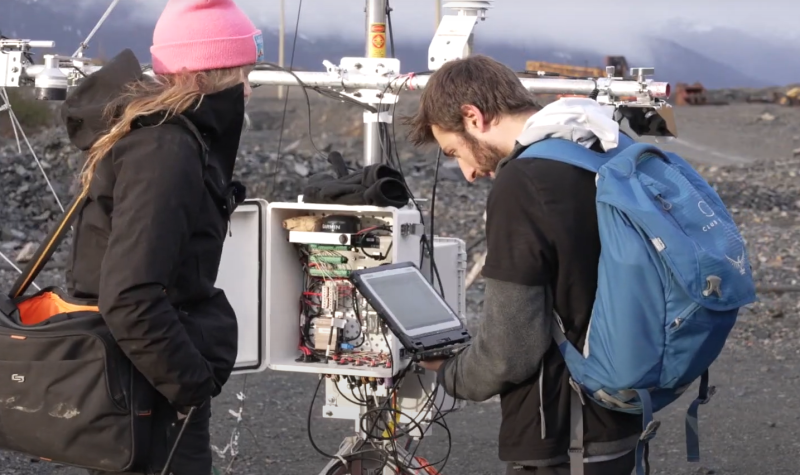As British Columbia continues to recover from the catastrophic flooding from a series of atmospheric rivers last year, UNBC researchers are set to install new and improved weather stations that will help us better understand the storms and their impact.
The Monitoring Extreme Climate and Hydrometeorological Events (MECHE) project led by Environmental Science Professor Dr. Stephen Déry received $97,150 from the Canada Foundation for Innovation’s John R. Evans Leaders Fund to equip two weather stations in west-central B.C.
“With this new equipment, we will be able to obtain detailed measurements on precipitation and meteorological conditions during atmospheric rivers and other storms,” Déry says. “We will be able to profile the atmosphere to characterize the ambient conditions that lead to precipitation formation and how it is distributed at the surface.”
The funding will support the purchase of specialized equipment for two sites, the UNBC campus in Terrace and the Huckleberry Mine near the Tahtsa Narrows in the Upper Nechako Watershed.
The Terrace site was selected because of its maritime climate. It lies in the frontline of the prevailing westerlies flowing off the Pacific Ocean where atmospheric rivers can yield copious precipitation in short periods. It is also one of the most susceptible locations in western Canada for freezing rain, icing and near 0°C conditions. Located further inland and at a higher elevation, the Huckleberry Mine site also receives large amounts of precipitation, but often in the form of snow in the autumn and winter months.
“These two sites provide counterpoints to track different extremes associated with the same storms,” Déry explains. “For instance, we will be able to distinguish if meteorological conditions and precipitation associated with atmospheric rivers have specific characteristics relative to other storms.”
In addition to the grant for the MECHE project, UNBC also received funding from the Canada Foundation for Innovation for a Terahertz Innovation Hub led by Physics Professor Dr. Matt Reid. The new hub will modernize the existing Terahertz Research Lab with new equipment specifically designed to help develop real-world applications of terahertz technology.


